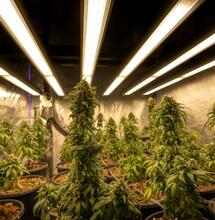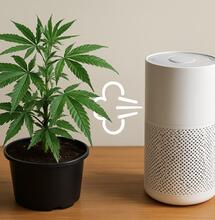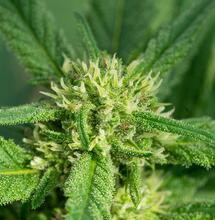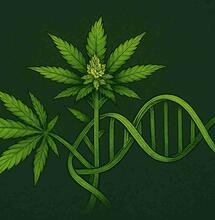Phenohunting Cannabis Plants and Mother Plants
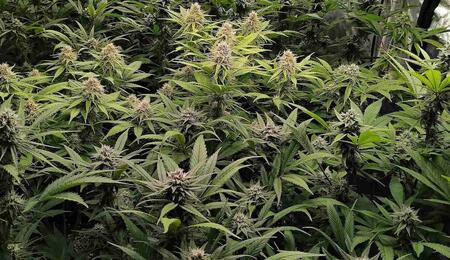
Have you ever grown out a bunch of seeds and found the best plant you've ever come across in your lifetime, but didn't take a clone? Do you wish every time you grow, you could keep that plant alive and have a mother plant to use for every harvest? In this article, I will explain the art of selection, including what cannabis phenotypes are, what to base your choice on, and the requirements for a mother plant.
What Is a Cannabis Phenotype?
Phenotypes are a reflection of a cannabis plant’s genetic make-up and what makes growing cannabis so much fun. As cannabis plants have parental lines, phenotypes represent the different possibilities that result from the parents; however, not all plants are the same and exhibit different desirable traits, depending on the grower.
Have you opened up your grow tent during the final weeks of the flowering stage, and there is one plant in there that you wish every other plant was like? The one plant that catches your attention as soon as you look around and seems to be the best yielder, most aromatic, frostiest and one with the most significant root mass.
This is known as the best phenotype, and among all the other plants, it is the one you wish you could grow every time and have as a mother plant. Similarly, the plant that is the worst in the tent is not worth keeping around for future runs. Instead, different phenotypes can be chosen based on the grower's ambitions and goals. Below is a list of the various traits and characteristics that can help a grower make their final decision when phenotyping a pack of cannabis seeds.
- The Yield Factor
- Trichome Production
- Terpenes
- Mould Resistance
- Flowering Time
- Root Production
- Plant Training
- Growth Structure
- Bract Development
- The Height
- Cloning Factor
Examples of Cannabis Phenotypes
Imagine growing out a ten-pack of regular OG Kush x Haze seeds. You plant five of the seeds in pots and watch how they grow over the vegetation and flowering stage. For example's sake, let’s say you throw out males and are left with three females, and your goal is to take clones of the best phenotype that you will use for your next crop, or with the intention of keeping a mother plant.
Phenotype #1:
This phenotype has the growth structure of the O.G. Kush, the same size and growth structure and very fuel-dominant terpenes, with very little Haze influence. The buds are small and dense, resembling those of O.G. Kush. The flowering time is 56 days.
Phenotype #2:
This phenotype is the biggest of all of the plants and has a mixture of Haze and O.G. terpenes. The buds are large and elongated, packed full of resin, and the plant exhibits a haze-dominant growth structure. The flowering time is 60 days.
Phenotype #3:
This phenotype is Haze dominant in terms of aroma, size and growth structure. The buds are airy and resemble those of the Haze plant. There is almost no O.G. Kush influence at all, and the flowering time is 70 days.
How Many Seeds Do You Need to Phenohunt?
Ideally, the more cannabis seeds you start with, the better! Over the years, I have found that germinating 20 cannabis seeds to find three keep phenotypes works well. Especially if you already know what type of phenotype you personally want to see.
Is It Better to Use Regular or Female Cannabis Seeds?
Working with regular seeds allows you to find much more variety in terms of genetic expression; however, you will need to sex the male and female plants. Doing so will reduce the final number of potential female keepers you end up with and often requires you to start with more seeds than you initially thought. If you are using regular seeds, plant 15-20 to end up with three keepers.
Feminised cannabis seeds are great for pheno hunting; however, the level of genetic diversity can be bottlenecked, resulting in plants that are similar in desirable traits. Do not bother phenohunting using feminised autoflowering cannabis seeds, as it is not possible to clone an autoflowering cannabis plant.
A List of Desirable Traits to Consider When Phenohunting Cannabis Plants
Below is a list of all the desirable traits you may want to consider in advance. Not everyone has the same end goal in mind, so the characteristics that are most important to you will significantly influence your final decision.
The Yield Factor
The amount of bud the plant produces is crucial, with the highest yielding being the most favourable for commercial production.
Trichome Production
This refers to the frostiness of the plants, particularly in terms of the buds and leaf material. Hash makers and extractors will most often choose plants with the highest amount of trichomes.
Terpenes
The terpenes on a plant can lean towards one side of the spectrum or the other. This depends on personal preference for what your favourite aroma and flavour profile is.
Mould Resistance
Some plants will have a greater resistance to mould than others. Nobody wants a plant that moulds easily, so choosing the plants with the highest resistance to mould can be one reason you pick one plant over another.
Flowering Time
Short flowering times are typically the most sought after; however, it all depends on what your goal is. Longer flowering times can lead to higher yields.
Root Production
The number of roots a plant produces can be a significant difference maker when hunting phenotypes. The more roots a plant produces, the substantial the effect on stature, nutrient uptake and how well it can be cloned.
Plant Training
Cannabis plants will produce different growth structures, meaning some will react better to plant training techniques, such as topping, fimming, Low Stress training, super cropping, and pruning, than others.
Growth Structure
The growth structure is often a reliable indicator of a cannabis plant's productivity. Avoid the smallest-sized plants if possible and focus on the ones that appear the most robust.
Bract Development
The bracts of a cannabis plant are what make up the buds. Depending on the phenotypes, some plants will produce small and tight buds, while others will be chunky and larger in size, affecting the final yield.
The Height
The final height of the plant or how much a phenotype stretches when flowered should be an essential factor. Growers with limited height may prefer a medium-sized, bushy plant, while others with more room have the freedom to work with taller, leaning plants.
Taking Clones
How easy a clone will root is an essential factor for me when phenohunting. It is only when you take a clone of many clones off each potential phenotype that you will discover which root best. Some clones may root within 7-10 days with a prolific root mass, whilst others are more stubborn and take much longer.
Keeping a Mother Plant of the Chosen Pheno
A mother plant is when you allow the keeper phenotype to establish itself as a large-sized plant that is kept in vegetation under 18/6. The role of the mother plant is to provide you with a consistent number of clones after each harvest to allow you to prepare for the next round. Mother plants are never allowed to flower and have the ability to preserve cannabis genetics for years or even decades at a time under the right circumstances.
The Optimal Pot Size for Cannabis Plants
Over the years, I have kept mother plants in pots as small as 10 litres in size, which produced 15-20 cuttings every 8 weeks. At other times, I have kept mother plants alive in 30-litre pots that were responsible for producing up to 50 clones every 8 weeks. The pot size you use will depend on how large you want the mother to become and how many clones you need for your grow cycle each harvest.
The Correct Light Cycle and Environmental Conditions
- Mother plants should be kept on an 18/6 light cycle
- The temperature should be 24 degrees Celsius
- Relative humidity should be 60-70%
- High Nitrogen nutrients are best suited
- Mother plants need time to recover and grow new shoots
The Conclusion
Phenohunting a pack of seeds makes growing cannabis indoors or outdoors even more exciting. Not only does finding a keeper female and producing a mother plant allow you to preserve your favourite genetics, it also saves time and money on new seeds. Good luck selecting your keeper phenotypes and searching for the next big thing!
